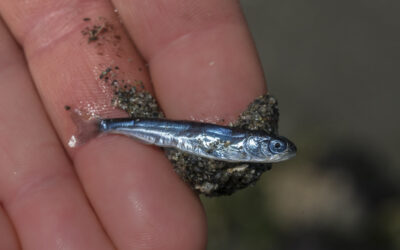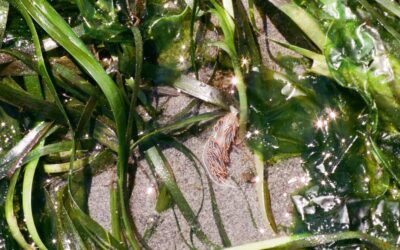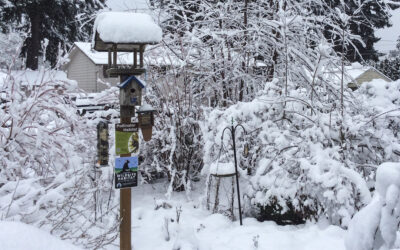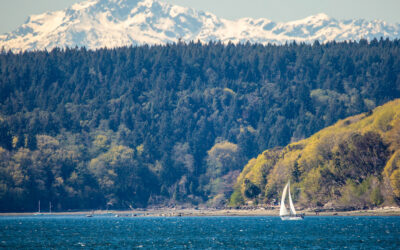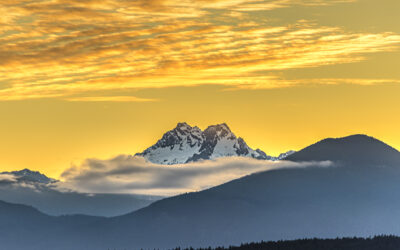SALISH COAST CURES FOR THE WINTER WANDERER
by Malaika Rosenfeld, Winter 2022

Nanaimo nudibranch. photo by Malaika Rosenfeld
SALISH COAST CURES FOR THE WINTER WANDERER
by Malaika Rosenfeld, Winter 2022
the situation
Swollen shades of gray horizons — wide, hanging low over dampening heads: winter in the Pacific Northwest again, and all I can think about is how distressingly natural it feels to be dreaming about tucking into a bowl of soup, then bed, by no later than 7 pm.
Winters here are reliably dark, cold, and — since we’re lucky enough to be sandwiched between an ocean and a mountain range — significantly wet. As an adaptive species, humans have taken this well enough in stride: thousands of years of village tradition gave us gathering around the hearth, Starbucks gave us seasonal drinks, and we called it a fair trade for not being able to feel the warm kiss of the sun for five agonizingly bleak months a year.
Skyline to seascape, life and the inexorable abiotic forces guiding it circle back into an inward-focused existence that envelopes the mind, body, and spirit when the seasonal clock strikes late autumn. Earth’s jauntily-tilted axis slings those of us closer to the poles back and forth along a dramatic spectrum of sunlight quantity and quality all year round. From the furls of sword ferns to the tightly packed cones of fir trees, down to the microscopic fractals and chains of autotrophic plankton that power the entire marine food web, the nutrient-dense building blocks of life are forced into a months-long hiatus of production.
A walk along the shore displays an environment gone dormant. Naked maple, alder, and subdued cedars line the bluffs, and the seasonally cloudy water of the Salish Sea is eerily clear and devoid of the algae that turn the depths into a rich soup. This ecosystem follows an order humans know well enough: When the dinner table ceases to be laid, no one comes to eat. Better to stay hunkered under the twiggy bedclothes of your nest or in your rocky intertidal hideaway then risk using a limited energy supply to forage for an uncertain yield.
As with any time of year, getting food comes with trade-offs, but the risks can often be higher than the rewards during the winter. In genetics too, however, necessity proves to be the mother of invention. In this seemingly interminable waiting period, the cells of flora and fauna alike have developed a variety of ways to cope with the dearth of energy inputs. Local perennial plant celebrities like douglas fir, cedar, and big leaf maple direct their carbohydrates to their roots for safekeeping, and the water in their tissues to intercellular nooks and crannies where it can freeze without damaging fragile organelles. In the aquatic world where hovering at the surface waiting for a weak sunbeam proves to be too uncertain a gamble, diatoms such as Skeletonema Amphora trade their buoyancy for thicker silica skeletons and sink into the mud of the seafloor, where they’ll stay safely burrowed until stormy weather upwells them back to the surface for a renewed lease on life. While slight seasonal drops in seawater temperature are confined to surface and shallow waters, ocean-dwelling fish still find exothermic harmony with their surrounding environmental conditions — albeit less dramatically than freshwater species — by slowing down their heart rates, decreasing oxygen and food needs, and putting a consequential moratorium on heightened activity.

Snailfish. photo by Erin Merklein
Regretfully, we are not fish, tree, or planktors; making it through the Big Long Dark is a lot more complicated than clues from the suspended world around us would have us believe. If we superficially withered like the tree, went into slow motion like the fish, or buried ourselves like the diatom all winter long, by the time spring came around, half the populations’ Notes apps would read like a melodrama of Shakespearan proportions with the kind of woe-is-me lines that can only be evoked when you spend 10 hours a day mournfully gazing out a window pounded by rain. We are humans, inherently social creatures, reliant on a web of shared knowledge and a penchant to play for playtime’s sake, to give us the requisite mental acuity and problem solving capacities that keep us alive; and absolutely, unequivocally prone to antsiness. Without an outlet for the discontent, guaranteeing bodily comfort by entering a systems-wide torpor often comes with the extra expense of being lulled into a lethargy of mind, body and spirit.
And so we arrive at the crux of the matter: while I won’t argue that tuning our behavior to reflect the sleepy environment around us is critical to a continued existence of physical and emotional balance, we needn’t turn the lights out and the Netflix on at 6 every night. Offsets are necessary, and I’ve discovered the ideal winter activity to fulfill that human need for companionship and material connection: night tidepooling. What better way to pay homage to millions of years of cold weather evolution than by turning a critical eye to the minutiae of the world on pause?
Believe it or not, tidepooling once a week — or the act of sliding around on algae-covered rocks with your neck craned at a crippling 30° angle for hours while you comb the intertidal zone of shorelines for marine critters — does wonders to stave off the isolating gloom. Perhaps more importantly, it offers a special opportunity to peer beyond the silent layer of a temperate winter ecosystem. The world may seem to be holding its breath, but on the microscale of a shallow divot of saltwater, life continues to zip around. A heartbeat slowed is still a heartbeat, after all.

Low tide explorations at Mukilteo. photo by John F. Williams
the solution
Last November my friends and I went to our local beach on the Olympic Peninsula in pursuit of this unique nocturnal microcosm, hoping in particular to find that eight-armed gelatinous icon, the Giant Pacific octopus. I’m a marine science educator by trade (please excuse the tidepooling bias), and I have to credit these aliens for being my gateway drug to all things under the sea. There’s something about the obvious otherworldliness of their trailing suctioned arms and undulations that draws us in; their mirrored interest in us when we stare at them has a humanizing power to transform them into inimitable creatures often as unsettling as they are mesmerizing.
While octopuses are intertidal creatures and known to travel relatively high up the shorelines to hunt, they are also crepuscular invertebrates (most active during dawn and dusk). Add to the mix their generally shy nature, and searching for an animal that can change its color and texture to match its surroundings and travel across a beach by slipping through 4″ rock crevices becomes a daunting challenge. This is partly why winter is such a beacon for this activity: the lowest tide generally occurs hours after sunset, giving the intrepid beachcomber a natural advantage.
My head was hung and my mind was planning a midnight snack as we trudged back towards our cars, when what should appear in the yellow column of my headlamp but two long, pale, suctioned arms sticking out from beneath a rock. It was unrequited love at first sight. Beckoning the others over in a voice far more casual than what I thought I’d be capable of whilst reaching nirvana, we carefully lifted the rock the arms had retreated under — and behold! Out it came! Like a pink and white marbled piece of flotsam, this deflated bag of a creature soundlessly flowed over the ground. We looked at it. It looked at us. We freaked out in barely contained whisper-shouts. It suddenly transformed into an old man with seashells tangled in his long white beard in a spray of sea foam, claimed it hailed from Poseidon’s court, and told us it would grant us three wishes.
A Giant Pacific Octopus can sometimes be seen at low tide, but if you venture underwater, you might find a den where one lives…and even see it contemplating crab for dinner. from Return of the Plankton, video by John F. Williams
Just kidding. Can’t have more than one dream come true at a time. Aside from the fact that we’d rudely busted into its hiding spot, I’m fairly certain it didn’t care about us or the momentous encounter that was taking place one way or another. Hoping to get in its good graces after gently replacing the rock, we caught a shore crab and placed it outside its hiding spot as an offering. We watched for signs of life for another good 10 minutes (none were seen other than the sacrificial crab scuttling away) then left content in heart and mind, if rather damp in boot.

Purple shore crab found at low tide. photo by John F. Williams

Low tide explorations at Mukilteo. photo by John F. Williams
the silver lining
While I do encourage everyone to try squatting in a 45 degree puddle of seawater to peer under rocks for the novelty, it’s the plucky mindset involved in the game that I hope to employ as the main takeaway. Even if all we ever found was a traffic jam of dock shrimp, making these weekly outings November to March subtly turned down the collar I’d shrank behind to stay untouched, necessarily separate, from the harsh outside environment. I began to engage instead as a participant observer of the winter world — and the rewards were invigorating.
As we sink into another cycle of cold, dark, and wet — and if you find yourself invariably drawn towards scrying the deeper pools of your mind — remember that this is a unique opportunity to learn from the life around us. Sleep deep, tucked under a mountain of quilts, take time to direct your energy with intention, but don’t forget that there is a special kind of joy in moving through a sleeping world. It’s a joy that quietly metes out secrets of soil and surf to the keen observer, complementary to the bustling, overt merriment of a summer ecosystem; less rowdy, perhaps, but characterized by plenty of compelling observations to keep restless legs and minds occupied all season long.
Happy Pacific Northwest winter, y’all. Time to suit up.

Malaika grew up exploring the green and blue spaces of the Salish Sea region, and loves to share and grow her connections to the land as an environmental educator and writer.
Table of Contents, Issue #18, Winter 2022
Vashon Glaciation
by Adria Magrath, Winter 2022 Forage fish. photo by John F. Williamsby Adria Magrath, Winter 2022Carefully shaking wet beach sand through a series of mesh screens can be a lot of fun. On a drippy gray weekend morning near the start of winter, our small group of...
Cold, Dark, Wet Visuals
Winter 2022This opalescent nudibranch hiding amongst the swaying eel grass at Carkeek Park Beach is briefly exposed as the tide rushes out to Puget Sound. Eel grass beds hold many secrets and are often referred to as the nursery of the intertidal. Perhaps the...
Winter Characters
text and photos by Thomas Noland, Winter 2022 WINTER CHARACTERS & THEIR BEHAVIOR text and photos by Thomas NolandWhen it's cold, dark, and wet, my native plant garden provides food and shelter for many winter residents. Birds and small mammals are active, and...
Salish Sea Winter
text and photos by Michele Jaenke Winter 2022A wintery hike in Dash Point State Park. Winter snow on the Franklin Falls hiking trail. A heavy snowfall during low tide on the Puget Sound. Fall and Winter colliding in a beautiful way on a local trail. Snow brings a...
Poetry-18
Winter 2022 Looking across Hood Canal at The Brothers poking up into the sunset over the Olympics. photo by John F. WilliamsLooking across Hood Canal at The Brothers poking up into the sunset over the Olympics. photo by John F. WilliamsWinter 2022My 'Hood by Al Gunby...
Kelp Forest Decline and Reforestation
by Marina Sannes, Winter 2022 Bull kelp and eelgrass off Tongue Point in Salt Creek Recreation Area, Clallam County, WA. photo by John F. Williamsby Marina Sannes, Winter 2022An iconic and beloved image, known well to those living on the West Coast and near the Salish...
PLEASE HELP SUPPORT
SALISH MAGAZINE
DONATE
Salish Magazine contains no advertising and is free. Your donation is one big way you can help us inspire people with stories about things that they can see outdoors in our Salish Sea region.
We also don't advertise Salish Magazine, so please spread the word of this online resource to your friends and colleagues.
Thanks so much for your interest and your support.
We also don't advertise Salish Magazine, so please spread the word of this online resource to your friends and colleagues.
Thanks so much for your interest and your support.








